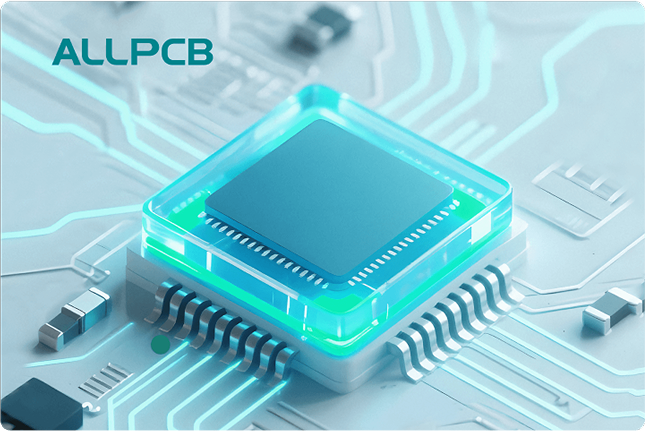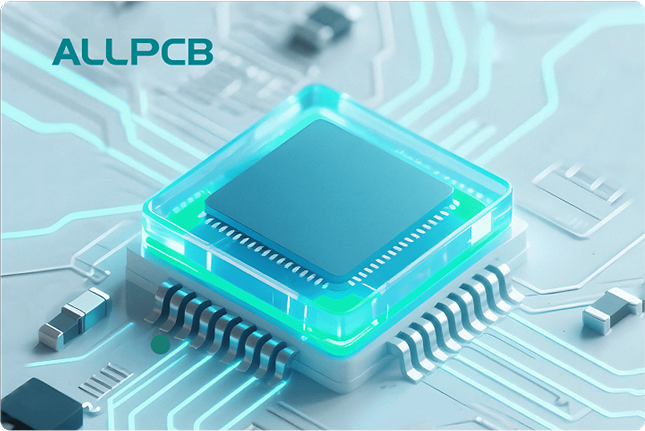If you're facing problems with your PCB cleaning equipment, you're not alone. Issues like inconsistent cleaning results, equipment downtime, or unexpected malfunctions can disrupt production and affect the quality of your printed circuit boards. In this guide, we'll dive into the most common problems with PCB cleaning equipment and provide practical solutions for PCB cleaning equipment maintenance, cleaning equipment malfunctions, PCB cleaning troubleshooting, and equipment repair. Whether you're a technician or a production manager, this blog will help you identify, resolve, and prevent issues to keep your operations running smoothly.
Why PCB Cleaning Equipment Matters in Manufacturing
PCB cleaning equipment plays a vital role in ensuring the reliability and performance of printed circuit boards. Contaminants like flux residues, dust, or oils can lead to corrosion, short circuits, or signal interference if not properly removed. According to industry studies, over 60% of PCB failures are linked to contamination issues during assembly. This makes effective cleaning—and well-maintained equipment—essential for producing high-quality electronics.
However, even the best cleaning systems can encounter problems over time. From mechanical failures to process inefficiencies, these issues can cause delays and increase costs. Let’s explore the most common challenges and how to address them through proper PCB cleaning troubleshooting and maintenance practices.
Common Issues with PCB Cleaning Equipment
Understanding the typical problems that arise with PCB cleaning equipment is the first step to effective troubleshooting. Below, we outline the most frequent issues and their root causes.
1. Inconsistent Cleaning Results
One of the most frustrating issues is when your equipment fails to clean PCBs uniformly. You might notice residue left on certain areas of the board or inconsistent drying. This can lead to quality control failures and rework.
Possible Causes:
- Clogged nozzles or spray heads, reducing the pressure or coverage of cleaning agents.
- Degraded or expired cleaning solutions that no longer effectively remove contaminants.
- Uneven conveyor speed, causing some boards to receive insufficient exposure to cleaning processes.
Solution: Start by inspecting the spray nozzles for blockages. Clean them with a soft brush or compressed air, ensuring no debris remains. Test the cleaning solution’s pH and concentration—most aqueous cleaners should maintain a pH between 10 and 12 for optimal performance. Replace the solution if it’s outside the recommended range. Finally, calibrate the conveyor speed to match the manufacturer’s specifications, typically between 0.5 to 2 meters per minute for standard inline cleaners.
2. Equipment Downtime Due to Mechanical Failures
Mechanical breakdowns, such as pump failures or motor issues, can halt production entirely. These problems often stem from wear and tear or inadequate PCB cleaning equipment maintenance.
Possible Causes:
- Worn-out seals or gaskets in pumps, leading to leaks or reduced pressure.
- Overheating motors due to dust accumulation or lack of ventilation.
- Misaligned or damaged conveyor belts, causing jams or stoppages.
Solution: Schedule regular maintenance checks to inspect critical components like pumps and motors. Replace seals and gaskets every 6-12 months, depending on usage. Clean motor vents and filters monthly to prevent overheating. For conveyor issues, ensure proper alignment and tension, and lubricate moving parts as recommended by the equipment manual.
3. Chemical or Water Leaks
Leaks in PCB cleaning equipment can create safety hazards, damage components, and waste valuable cleaning agents. This is a common issue in systems that use aqueous or solvent-based cleaning solutions.
Possible Causes:
- Cracked or loose fittings in the plumbing system.
- Corrosion of internal components due to prolonged exposure to harsh chemicals.
- Overfilling of tanks, leading to spills during operation.
Solution: Inspect all hoses, fittings, and tanks for signs of wear or damage. Tighten loose connections and replace any cracked parts immediately. Use corrosion-resistant materials for components exposed to chemicals, and monitor tank levels to avoid overfilling. Implementing a daily visual inspection can catch leaks early, saving time and resources.
4. Excessive Noise or Vibration
Unusual noise or vibration from your cleaning equipment often signals an underlying problem. Ignoring these symptoms can lead to more severe cleaning equipment malfunctions.
Possible Causes:
- Loose bolts or mounting hardware on the machine frame.
- Unbalanced conveyor belts or rollers.
- Worn-out bearings in motors or pumps.
Solution: Tighten all bolts and hardware during routine maintenance. Check the balance of conveyor belts and rollers, adjusting as needed. Replace worn bearings promptly—most bearings in industrial cleaning equipment should last 10,000 to 20,000 operating hours under normal conditions. Addressing these issues early can prevent costly repairs down the line.
Step-by-Step Guide to PCB Cleaning Troubleshooting
When a problem arises, a systematic approach to PCB cleaning troubleshooting can save time and reduce frustration. Follow these steps to diagnose and resolve issues effectively.
Step 1: Identify the Symptoms
Start by observing the equipment’s behavior. Are there visible signs like leaks or residue on PCBs? Is the machine making unusual sounds? Documenting these symptoms helps narrow down potential causes.
Step 2: Check the Basics
Before diving into complex repairs, verify the simple things. Ensure the power supply is stable, typically within 5% of the rated voltage (e.g., 220V ± 11V for most industrial systems). Confirm that cleaning solutions are at the correct concentration and temperature, often between 40-60°C for aqueous cleaners.
Step 3: Inspect Key Components
Examine critical parts like nozzles, pumps, and filters for blockages or damage. Use a multimeter to test electrical connections if the equipment fails to start or operates intermittently. Look for continuity in circuits, aiming for resistance values close to 0 ohms in healthy connections.
Step 4: Test and Adjust Settings
Run a test cycle with a sample PCB to observe the cleaning results. Adjust settings like spray pressure (typically 30-50 psi for most systems) or conveyor speed if the output isn’t satisfactory. Monitor the rinse and drying stages to ensure no moisture remains on the board, as this can lead to oxidation.
Step 5: Document and Monitor
Keep a log of the issue, the steps taken, and the outcome. This record is invaluable for identifying recurring problems and planning preventive equipment repair or maintenance schedules.
Preventive Maintenance Tips for PCB Cleaning Equipment
Preventing issues is always better than fixing them. A proactive PCB cleaning equipment maintenance routine can minimize downtime and extend the lifespan of your machinery. Here are some actionable tips.
1. Establish a Regular Cleaning Schedule
Clean the equipment itself daily to remove chemical residues or debris. Pay special attention to filters and nozzles, which can clog easily. A weekly deep clean of tanks and internal components can prevent buildup that leads to cleaning equipment malfunctions.
2. Monitor Fluid Levels and Quality
Check the levels and condition of cleaning solutions and rinse water daily. Replace fluids according to the manufacturer’s guidelines, typically every 1-2 weeks for high-volume operations. Use a refractometer to measure solution concentration, aiming for the recommended range (often 10-15% for aqueous cleaners).
3. Lubricate Moving Parts
Apply lubricant to conveyor belts, rollers, and other moving parts monthly. Use food-grade or industrial-grade lubricants compatible with your equipment to avoid contamination of PCBs during cleaning.
4. Train Staff on Proper Use
Ensure all operators are trained on correct equipment handling and troubleshooting basics. Mistakes like overloading the conveyor or using incompatible cleaning agents can cause significant damage. A well-trained team can spot early warning signs and prevent major issues.
5. Schedule Professional Inspections
Arrange for a professional technician to inspect your equipment every 6-12 months. They can perform detailed diagnostics, test electrical systems, and replace worn components before they fail. This investment often saves money by avoiding unexpected breakdowns.
When to Seek Professional Equipment Repair
While many issues can be resolved in-house, some problems require expert intervention. Knowing when to call for professional equipment repair can prevent further damage.
Signs You Need Help:
- Persistent electrical faults, such as frequent power trips or blown fuses.
- Major mechanical failures, like a seized pump or broken conveyor motor.
- Recurring issues despite troubleshooting, indicating a deeper design or compatibility problem.
Professional technicians have access to specialized tools and diagnostic equipment, allowing them to address complex issues efficiently. They can also provide insights into optimizing your cleaning process for better results.
Conclusion: Keeping Your PCB Cleaning Equipment in Top Shape
Maintaining and troubleshooting PCB cleaning equipment doesn’t have to be a daunting task. By understanding common issues like inconsistent cleaning, mechanical failures, and leaks, you can take proactive steps to address them. Regular PCB cleaning equipment maintenance, systematic PCB cleaning troubleshooting, and timely equipment repair are the keys to avoiding costly downtime and ensuring high-quality PCB production.
Implement the tips and strategies outlined in this guide to tackle cleaning equipment malfunctions head-on. With a well-maintained system, you’ll achieve consistent cleaning results, extend the lifespan of your equipment, and keep your manufacturing process running smoothly. Stay ahead of potential problems, and your production line will thank you for it.
 ALLPCB
ALLPCB







